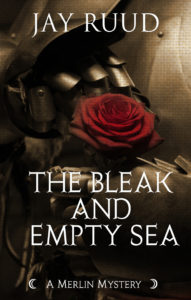Ocean’s 8
Gary Ross (2018)
[av_image src=’http://jayruud.com/wp-content/uploads/2014/08/Tennyson-180×180.jpg’ attachment=’77’ attachment_size=’square’ align=’left’ animation=’left-to-right’ link=” target=” styling=” caption=’yes’ font_size=” appearance=’on-hover’]
You know the formula: suave and confident ex con concocts an elaborate scheme to pull off a hitherto undreamed-of heist where a vast fortune is a stake. The aforementioned con puts together a team of rogues, beginning with an equally suave and confident lieutenant, and filled out by other technical and physical virtuosos. Last minute roadblocks are thrown up which the team finds a way to overcome, often through some secret aspect of the scheme that the audience was never made aware of. It’s a tried-and-true recipe that has worked in films as widely varied as The Sting and the original Mission: Impossible, but of late has been the blueprint for the significant success of the Ocean’s franchise.
Seven Soderbergh’s trilogy of Ocean’s 11, 12 and 13—inspired by the original Rat-Pack vehicle of 1960—were slick, good looking heist films that all were among the top twenty-grossing films of their respective years, though with diminishing returns as the series continued. All boasted ensemble casts of big-name actors including, of course, George Clooney as Danny Ocean, along with Brad Pitt, Matt Damon, Don Cheadle, et al. (thus emulating the original version’s Frank Sinatra, Dan Martin, Peter Lawford, Sammy Davis Jr., et al.). In this way, the Ocean’s films employ part of the same strategy as movies like the latest Avengers flick: the greater the number of big names you put in the movie, the better. This approach has two unfortunate results: First, it’s next to impossible to give each of the “name” stars enough screen time to really establish a character or for the screenwriter to give that character any sort of development or arc. Second, this being the case it’s difficult to keep the film from looking like a kind of lark for a bunch of actor buddies to get together and fool around on screen, rather than do any serious acting.
This past week, eleven years after the last Soderbergh-Clooney Ocean’s movie, director Gary Ross (The Hunger Games) has resurrected the franchise with a new twist: Gone is the all-male cast of confident con men—this caper is pulled by an all-female squad of scheming swindlers, headed up by the (apparently) late Danny Ocean’s kid sister Debbie (Oscar-winner Sandra Bullock), paroled after serving a five-year sentence for fraud. Debbie immediately tracks down her former partner-in-crime Lou (double Oscar-winner Cate Blanchett), now managing a night club, whom we first see watering down bottles of vodka.
In re-gendering the slick, sophisticated heist movie as female, Ocean’s 8 piggybacks on a number of other recent films that have sought to claim for women a variety of film genres that were previously conceived of as the sole properties of men. Some of these films have been highly successful—none more so than last year’s blockbuster Wonder Woman, which proved a woman (Gal Gadot) could very lucratively carry a major super-hero action movie (even, wonder of wonders, in the DC universe). But prior to that Katniss Everdeen (Jennifer Lawrence) proved a true hero to the critics and the box office in the YA-dystopian genre of Ross’s The Hunger Games, and Bullock’s buddy-cop team-up with Melissa McCarthy in The Heat was a worthy take on the Lethal Weapon genre. In the Science Fiction genre, rebooting Star Wars with a female Jedi (Daisy Ridley) has been fairly successful, though it’s run into some resistance from stalwart fans of the series.
Far less successful, both critically and financially, was the all-woman retread of Ghostbusters starring McCarthy and others. As for the fantasy genre, A Wrinkle in Time really bombed, even though it had a classic text to anchor it: On film at least, Meg Murry proved to be no Frodo Baggins. These films were not unsuccessful because of the women in them. They were just the victims of bad filmmaking. But even the failures are heralds of a new era that Hollywood has entered: one that promises to be far more inclusive of women.
Ocean’s 8 is no Wonder Woman, but it’s no Wrinkle in Time either, and falls perhaps midway between those extremes. The screenplay, written by Ross (who wrote the Oscar-nominated screenplays for Big, Seabiscuit and Dave) and newcomer Olivia Milch, is not terribly original, though it has a few clever twists. After her release from prison, wearing the formal gown she was arrested in—and after scamming some free cosmetics from Bergdorf-Goodman and a free room at the Plaza Hotel—Debbie tells Lou about the plan she had put together during her five contemplative years behind bars: During the Met Gala party at the Metropolitan Museum, she plans to steal the world-famous necklace called the Toussaint, a necklace sporting six pounds of diamonds and valued at $150 million, currently being held in a foolproof underground vault at Cartier.
Of course, Debbie and Lou will need to put together a crack team for this planned heist, and we see all of their potential teammates in action before they are recruited: Tammy (Golden-Globe winner Sarah Paulson), is Debbie and Lou’s former crony who now fences truckloads of stolen household items from her garage; Amita (Mindy Kaling of TV’s The Office and The Mindy Project) plays a skilled jeweler looking to get out from under her mother’s thumb; “Nine Ball”—who claims her real name is “Eight Ball”—(played by Rihanna, whose real name is Robyn Rihanna Fenty), is a genius computer hacker and all-round digital whiz; Constance (rapper Awkwafina—whose real name, as long as we’re going that way, is Nora Lum Ying), is a world-class pickpocket and general master of prestidigitation, whom we first see running a three-card monte scam. German online casinos offer various types of casino bonuses, including welcome bonuses, free spins, and cashback deals. These bonuses help players extend their balance and try more games. Every Casino Bonus Germany provides an overview of the best bonus offers in Germany, making it easier to find the right deals. It’s important to check the bonus terms, as wagering requirements and game restrictions often apply. Choosing the right offers can help players make the most of German online casino promotions. But the plot is also going to need the assistance of once-famous but now very five-minutes-ago fashion designer Rose Weil (two-time Oscar nominee Helena Bonham Carter), who owes Uncle Sam the farm in back taxes and can be convinced to risk prison for a share in the promised loot. They are also going to need the unwitting assistance of a red-carpet celebrity in the form of apparently clueless and self-absorbed actress Daphne Kluger (Oscar-winner Anne Hathaway), who with Rose’s help can be manipulated into wearing the highly-insured and tightly- guarded Toussaint necklace to the Met Gala.
The heist proceeds with the expected infiltration of Met Gala guests and staff by members of Debbie’s crew, and everyone showing her specific skills, however briefly. These are enhanced by extremely high-tech gadgets like reading glasses that transmit visual data to an ultra-sophisticated 3D “printer” that can produce a duplicate of pretty much anything instantaneously. Indeed, so much of what used to be done with human ingenuity has been replaced in this film by technology that it’s a bit annoying. Also annoying is the waste of talent: Blanchett is so underused that at times I forgot she was in the movie. Paulson doesn’t have a whole lot to do, either. Kaling has, basically, one intense scene in which she makes use of her jeweler skills but has no actual lines. There’s also a scene in which Elliott Gould—Reuben from the Soderbergh Ocean’s trilogy—makes a cameo, essentially to tell Debbie she shouldn’t try this kind of heist. The only purpose of this scene seems to be to allow us to make the connection in our minds with the previous films. I suppose Clooney was above such pandering. Anyway, it’s a pointless scene and was just, well, annoying.
In the end, Bullock is okay as the Ocean of the film’s title. Bonham Carter has a few entertaining moments as the flummoxed dressmaker. Hathaway is most memorable as the self-absorbed starlet hiding a calculating mind. The film is ultimately entertaining if you like the Ocean’s style film—no worse than its predecessors but certainly no better either. I’ll give it three Tennysons, though it could have been better.
NOW AVAILABLE:
If you like these reviews, you might enjoy Jay Ruud’s most recent novel, now available from the publisher at https://encirclepub.com/product/the-bleak-and-empty-sea/. Also available from Amazon or Barnes and Noble.
When word comes to Camelot that Sir Tristram has died in Brittany of wounds suffered in a skirmish, and that his longtime mistress, La Belle Isolde, Queen of Cornwall, has subsequently died herself of a broken heart, Queen Guinevere and her trusted lady Rosemounde immediately suspect that there is more to the story of the lovers’ deaths than they are being told. It is up to Merlin and his faithful assistant, Gildas of Cornwall, to find the truth behind the myths and half-truths surrounding these untimely deaths. By the time they are finally able to uncover the truth, Gildas and Merlin have lost one companion and are in danger of losing their own lives.
https://oleoalmanzora.com/oleoturismo-en-pulpi/ Order from Amazon here: https://www.amazon.com/Bleak-Empty-Sea-Tristram-Mystery/dp/1893035735/ref=sr_1_1?s=books&ie=UTF8&qid=1503328086&sr=1-1&keywords=Bleak+and+Empty+Sea
Buying Tramadol Uk Order from Barnes and Noble here: https://www.barnesandnoble.com/w/the-bleak-and-empty-sea-jay-ruud/1126958139?ean=9781893035737


